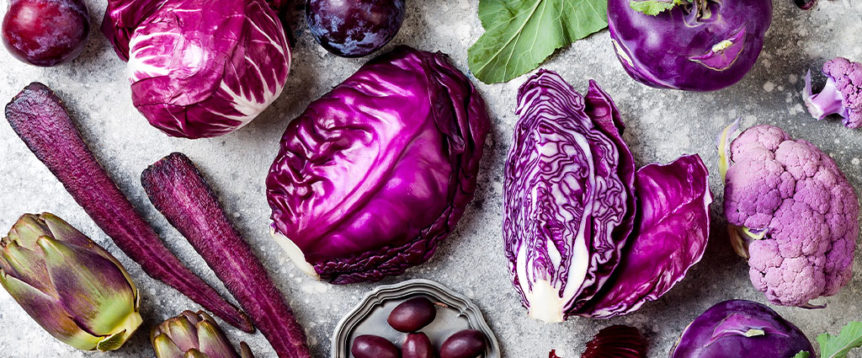Food trends aren’t always worth your time, but one of the latest—eating nutritious purple foods—is an exception. That’s because the purple-food craze—hailed by trend trackers such as Sterling-Rice Group and Whole Foods analysts—has substantial science behind it. A wide range of studies show that anthocyanins (or anthocyanidins), the antioxidant compounds that make foods purple (or blue or red), abound in health benefits. Here are some of their best-researched qualities of purple foods health benefits.
Support the Cardiovascular System
Numerous studies indicate that regular anthocyanin consumption may normalize blood pressure, reduce heart-attack risk and help prevent cardiovascular disease.
Fight Cancer
A variety of research has shown anthocyanins could help prevent or inhibit the growth of cancers such as breast, colon, liver and prostate.
Enhance Cognition
Some evidence suggests that anthocyanins, specifically those in berries, may improve mental function and reduce cognitive decline, especially in older adults.
Squelch Inflammation
High anthocyanin intake has been linked with lower inflammation levels. For example, a study in The Journal of Nutrition found that women ages 18 to 76 who consumed the most anthocyanins tended to have the lowest inflammation markers.
Block Diabetes
The same study that demonstrated reduced inflammation levels showed that women who consumed more anthocyanins had better insulin resistance. Other research on both people and animals has also found that anthocyanins may protect against diabetes.
Reverse UV Damage
Purple foods may also help keep you looking young. A few studies, including one from Molecular Nutrition & Food Research, hint that high anthocyanin intake may inhibit the aging effects of UV rays on the skin.
Purple Foods You Should Be Eating
Purple foods range from the common (grapes, eggplant, blackberries) to the unusual (purple carrots, purple cauliflower, black rice). Consumers sometimes shy away from the more uncommonly purple foods—potatoes, cauliflower, brussels sprouts, corn, asparagus and so on—assuming they have been genetically modified. But usually they are long-standing natural varieties. One notable exception: purple tomatoes, which have been genetically modified to improve taste and longevity.
In general, the darker the color, the higher the anthocyanin concentration, and in turn, the greater the nutrition boost. The exact anthocyanin structure varies from food to food, and emerging research indicates that different structures bestow different health advantages. But until scientists uncover the specifics, experts recommend eating a range of purple, blue and red plant foods, such as the following:
- Blackberries
- Blueberries
- Mulberries
- Elderberries
- Black currants
- Acai berries
- Plums/prunes
- Figs
- Grapes
- Eggplant
- Cabbage
- Beets
- Red onions
- Black rice
- Purple potatoes
- Purple sweet potatoes
- Blue corn
- Purple cauliflower
- Purple carrots
- Purple brussels sprouts
- Purple asparagus

